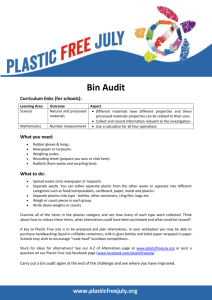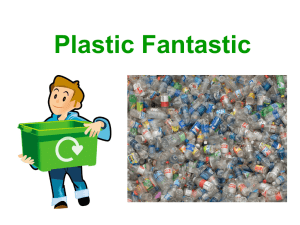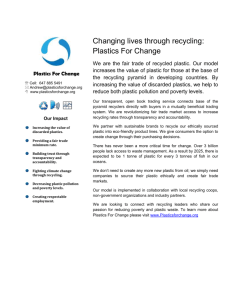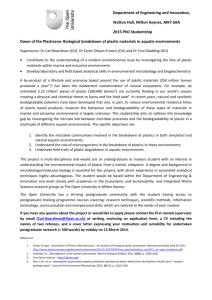OTBA material for class VII - Kendriya Vidyalaya Anantapuram
advertisement
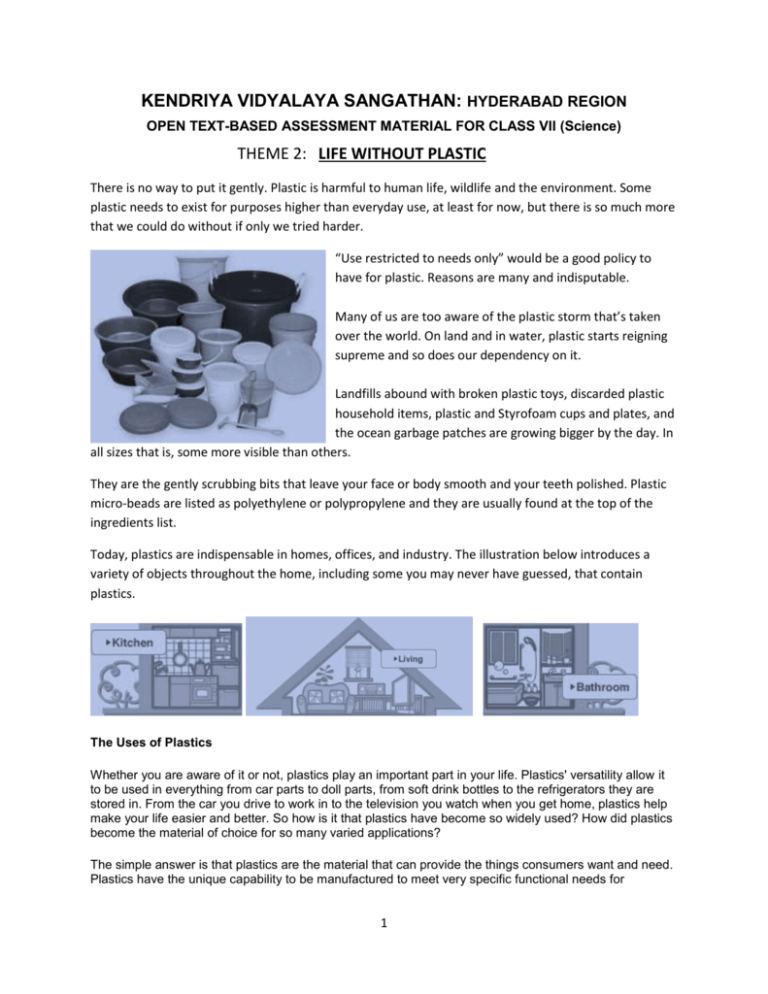
KENDRIYA VIDYALAYA SANGATHAN: HYDERABAD REGION OPEN TEXT-BASED ASSESSMENT MATERIAL FOR CLASS VII (Science) THEME 2: LIFE WITHOUT PLASTIC There is no way to put it gently. Plastic is harmful to human life, wildlife and the environment. Some plastic needs to exist for purposes higher than everyday use, at least for now, but there is so much more that we could do without if only we tried harder. “Use restricted to needs only” would be a good policy to have for plastic. Reasons are many and indisputable. Many of us are too aware of the plastic storm that’s taken over the world. On land and in water, plastic starts reigning supreme and so does our dependency on it. Landfills abound with broken plastic toys, discarded plastic household items, plastic and Styrofoam cups and plates, and the ocean garbage patches are growing bigger by the day. In all sizes that is, some more visible than others. They are the gently scrubbing bits that leave your face or body smooth and your teeth polished. Plastic micro-beads are listed as polyethylene or polypropylene and they are usually found at the top of the ingredients list. Today, plastics are indispensable in homes, offices, and industry. The illustration below introduces a variety of objects throughout the home, including some you may never have guessed, that contain plastics. The Uses of Plastics Whether you are aware of it or not, plastics play an important part in your life. Plastics' versatility allow it to be used in everything from car parts to doll parts, from soft drink bottles to the refrigerators they are stored in. From the car you drive to work in to the television you watch when you get home, plastics help make your life easier and better. So how is it that plastics have become so widely used? How did plastics become the material of choice for so many varied applications? The simple answer is that plastics are the material that can provide the things consumers want and need. Plastics have the unique capability to be manufactured to meet very specific functional needs for 1 consumers. So maybe there's another question that's relevant: What do I want? Regardless of how you answer this question, plastics can probably satisfy your needs. If a product is made of plastic, there's a reason. And chances are the reason has everything to do with helping you, the consumer, get what you want: Health. Safety. Performance. Value. Plastics help make these things possible. The same principles apply in appliances such as refrigerators and air conditioners. Plastic parts and insulation have helped to improve their energy efficiency by 30 to 50 percent since the early 1970s. Again, this energy savings helps reduce your electric and cooling bills. And appliances run more quietly than earlier designs that used other materials. Environmental Harm – Ever increasing plastic production since 1950s managed to saturate world with waste plastic product that can cause big effects on our environment. Decomposing of plastic product can last from 400 to 1000 years with newer “degradable” compounds, but before that degradation can happen waste plastic will continue to clog our waterways, oceans, forests, and other natural habitats that are filled with animals who mistake dangerous plastic for food. Chemical dangers are also high, because both creation and recycling of plastic produce toxic materials of many kinds. So ,plastic has both sides of a coin , advantages and disadvantages . 2



